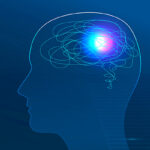What is a Sleep Pattern Disturbance?
According to the CDC, adults, between the ages of 26 and 64, need 7-9 hours of sleep every night.
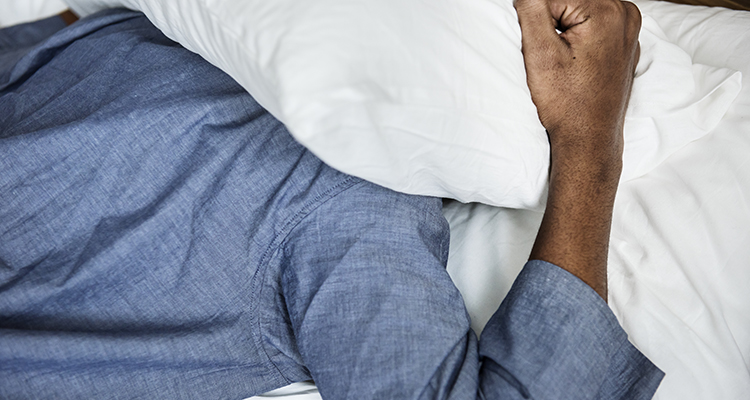
Believe it or not, sleep is a basic necessity – at least for most species on Earth. Sleep helps you function at an optimal level each day. Without proper sleep, you end-up feeling swamped with stress, tied up with tension, antsy and easily irritated, extremely mentally and physically exhausted, zapped of your energy, and thoroughly robbed of your vitality. Your brain and body enter a “survival mode” just to keep functioning from day to day.
Without sleep, your cells, tissues, organs, limbs, blood vessels, etc., can’t repair themselves from previous injuries and ailments. Why not? Because sleep is considered “night fuel.” In other words, when you shut your eyes and prepare to drift asleep, your body enters into a “sleep mode.” And, as you delve deeper into sleep (REM sleep), your body prepares to enter the “shutdown mode,” where you completely “let go.” This is when the real work occurs – “natural surgery” to your damaged body parts.
Once, the damage has been repaired, you awaken (the next morning) feeling refreshed, revitalized, and reenergized. You feel stronger, calmer, more confident, and more balanced. You move better, think more logically, and have a higher tolerance for pettiness. It’s like your stress evaporated overnight! The tension in your shoulders, knees, back, neck, mind, etc., have disappeared.
Sleep did all of that? Absolutely!
Sleep helps you attain a fulfilled life that only comes with a healthy mind and body!
The good news is sleep pattern disturbance disorder doesn’t have to stop you from achieving your dreams (even your sleep-related ones) and becoming the strong, confident, focused, calm, and centered person you were meant to be. Sometimes, all it takes to regain your vivacity is proper zzz!
Content
What is a Sleep/Wake Cycle?
A sleep/wake cycle involves four complex stages of “consciousness” – Stages 1-3 involves NREM or non-rapid eye movements (light sleep), while Stage 4 involves REM or rapid-eye-movement (deep sleep). Once you awaken from sleep, it is called “wakefulness.” FYI: Once you awaken from slumber, you have entered a temporary or permanent “wakefulness,” regardless of when you awaken. It is equally important to understand that “premature wakefulness” is always a looming threat to your sleep quality.
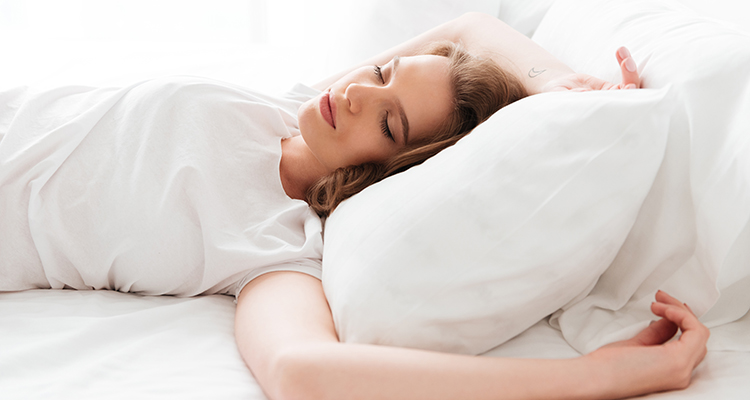
So, any time you awaken “too early” “wakefulness” becomes a sleep pattern disturbance. Keep in mind that “chronic wakefulness” can prevent you from getting adequate rest, leading to primary or secondary insomnia, and a host of unpleasant side-effects, such as daytime drowsiness, laziness, mental confusion or disorientation, moodiness, anger, aggression, suicidal ideation, depression, anxiety, PTSD, panic attacks, poor wound or injury healing, low immune system, obesity, high blood pressure, etc.
Also, keep in mind that your ability to fully enter REM sleep or “deep sleep” naturally dissipates as you age – increasing your risk of sleep pattern disturbances and insomnia. What does that mean? It means that as you age, the amount of time spent in REM sleep decreases, so you experience more episodes of sleep pattern disturbances and “sleeplessness.”
Conversely, however, sleeping less may not be a terrible thing for most older adults, In fact, some studies indicate that people need less sleep as they get older. However, researchers also suggest that quality sleep is always important, and even more important, once you become older and require more “nightly repairs.”
What Are the Various Stages of Sleep?
As mentioned previously, there are 4 stages of sleep (sleep/wake cycles) – with each stage playing a significant role in your sleep quality. So, why is getting adequate sleep so important to your health and well-being? Sleep is important because without it your mind and body are unable to function properly. In other words, when you fall asleep each night, your brain enters or “cycles” through two main stages of sleep – non-REM sleep (light sleep) and REM sleep (deep sleep).
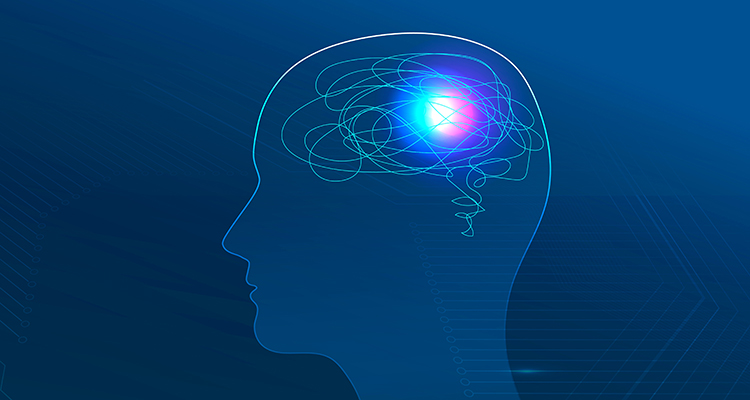
Throughout the night, (if you can get sound sleep), you alternate between the various NREM and REM stages and phases of sleep. First, you enter is an NREM or non-REM sleep phase, which involves two sleep phases – Stage 1 & Stage 2. During Stage 1: Your oxygen and heart rates decrease. During Stage 2: Your muscles begin to relax and noises begin to “dull,” so they do not interfere with your sleep/wake cycles.
FYI: You may experience dreams, nightmares, or night terrors during an NREM stage, although this is rare.
During Stage 3: You enter a deeper sleep (REM sleep). As the name implies, during REM sleep, your eyes flutter or move rapidly. This is when you dream. During this stage, your body may twitch or move, and/or your oxygen, heart, and pulse rates increase.
Note: Remember, throughout the night, your mind and body “cycle” through the various sleep stages and phases. For instance, you may begin with non-REM sleep and then, at a later time, enter a REM sleep state – only to experience a sleep pattern disturbance that puts you back in a non-REM sleep state.
Most people eventually reenter the REM sleep stage – only to reenter the NREM sleep state sometime during the night or close to the time for you to get up for the day. These fluctuations can happen several times during the night. Thus, during sleep, you continuously move between NREM and REM sleep (drifting in and out of light and deep sleep) states. However, this process can be and is sometimes “disrupted.” When this occurs, you are left with insomnia.
How Long Does It Take to Cycle Through the Sleep Process?
It takes about 90-120-minutes to complete the sleep cycle – i.e., go from non-REM sleep to REM sleep, then back to non-REM sleep, and back to REM sleep again. This is called a “cyclic sleep pattern,” and this pattern appears to hold steady for most healthy people.
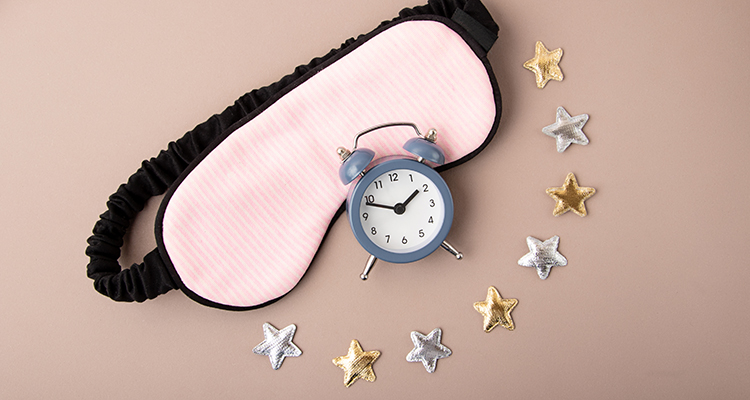
What is the “Official” Definition of Sleep Pattern Disturbance?
There are many sleep pattern disturbance definitions and interpretations, however, the “official” definition describes sleep pattern disturbances as “temporary interruptions or disruptions in a person’s sleep patterns and routines, including the length and quality of the “disturbances and your perception of your sleep quality.”
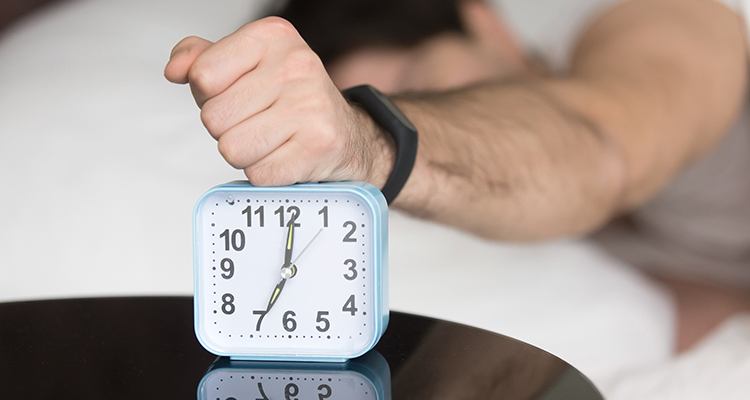
Can a Sleep Pattern Disturbance Really Mess Up Your Sleep Cycles?
Yes!
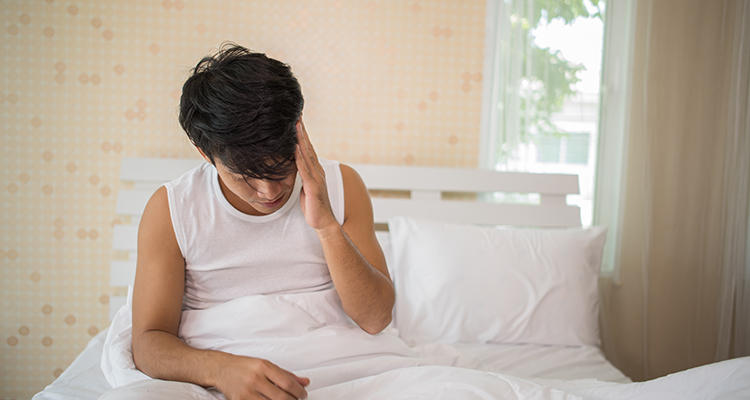
A variety of factors can “mess up” your sleep cycles, such as extremely bright lights or really loud noises, chronic or acute pain, injuries, stress or tension, traveling and/or jet lag, having a roommate, partner, or spouse staying in your room and/or sleeping in your bed, and/or certain medications (i.e., antihistamines, antidepressants, beta-blockers, bronchodilators, decongestants, opioids, steroids, hypnotics, and anti-anxiety meds, etc.), drugs and alcohol, changes in your routine, circadian rhythms issues, illness or chronic conditions, and/or depression or anxiety.
What Can Cause a Sleep Pattern Disturbance?
There are a variety of possible sleep pattern disturbances “causes.” For instance, some health conditions, chronic pain, ailments, and medications can trigger sleep pattern disturbances. Even hormonal fluctuations and imbalances (i.e., puberty, pregnancy, perimenopause, menopause, monthly menstrual cycles, etc.) can “disturb” your sleep pattern and cause chronic sleep deprivation.
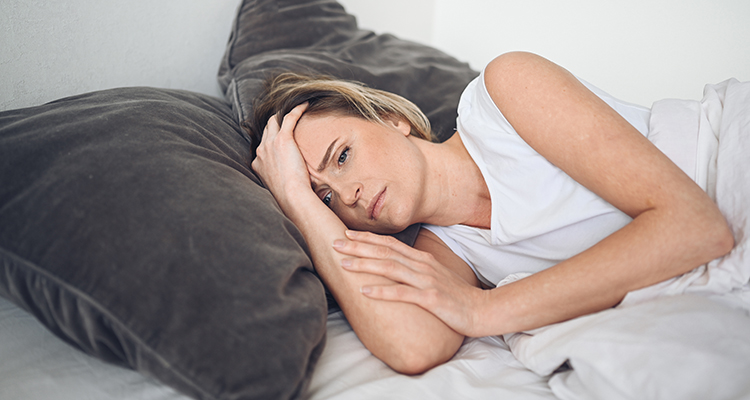
Note: One of the most common causes of sleep disorders and sleep disturbances is pain, especially amongst older people. One least common but still highly prevalent “cause” of sleep disturbances is heart failure. Heart failure is usually accompanied by breathing issues and restlessness – which can affect your sleep quality (keeping you awake or waking you up several times throughout the night). An accelerated heart rate and/or heart palpitations can also “disturb” your sleep, possibly leading to acute or chronic insomnia.
Other “causes” of sleep pattern disturbances may include: cardiovascular disease (heart disease), emphysema, nocturnal asthma, sleep apnea, chronic obstructive lung disease (COPD), restless leg syndrome (RLS), multiple sclerosis (MS), Parkinson’s disease, lupus, rheumatoid arthritis, fibromyalgia, narcolepsy, circadian rhythm sleep disorder, an uncomfortable sleeping environment, heartburn, acid reflux or GERD, a rowdy or restless partner, seasonal changes, pregnancy, PMS, and colds, allergies, and upper respiratory infections can lead to breathing difficulties, discomfort, pain, and/or “sleeplessness,” insomnia, and restlessness.
Even a “stuffy nose” can prevent you from falling and staying asleep at night. Furthermore, sleep pattern disturbances like stress (especially chronic stress), tension, fear, frustration, depression, anxiety, uncertainty, substance abuse, a change in location or school or work schedule, and jet lag can contribute to sleep disorders, like insomnia.
What are the Signs of Sleep Pattern Disturbances?
Now that you have a better understanding of healthy sleep patterns, it’s time to delve into the signs of “disturbed” sleep patterns. When something – anything – disrupts or “disturbs” your sleep patterns (sleep/wake cycles), it throws your body chemistry off-balance, leading to next-day sleepiness, fogginess, confusion, fatigue, laziness, aches, and pains, moodiness, etc. Why does this happen? Well, because your body is unable to repair and recharge itself during the night, so it is left to run on “fumes.”
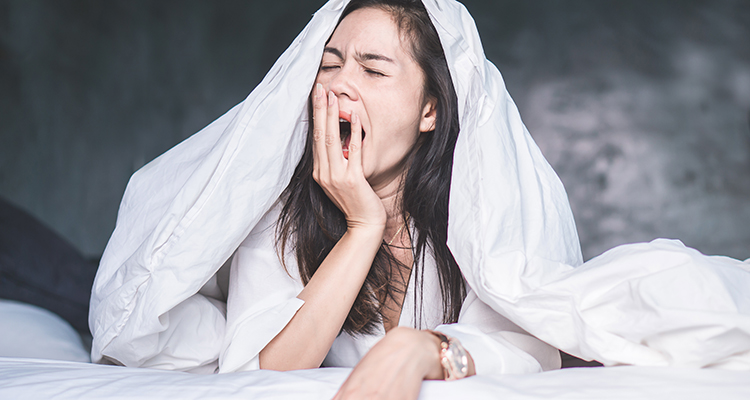
In other words, when you don’t get enough sleep, your mind and body pay the cost. Surprisingly, however, most sleep pattern disturbances happen while you are asleep, so you do not even know they are occurring – that is until you start to display the signs of poor sleep quality – daytime sleepiness, irritability, anger, achiness, confusion, memory issues, depression, anxiety or panic attacks, a lack of motivation, inattention, etc.
Keep in mind that sleep pattern disturbance signs hinge on the sleep stage being “disturbed” and the cause of the “disturbance.” For instance, a sleep pattern disturbance that occurs during a non-REM sleep phase may make it hard for someone to fall asleep or cause him or her to awaken too early, while a person, who experiences a sleep pattern disturbance during REM sleep may awaken several times throughout the night, only to find it challenging, if not impossible, to re-enter REM sleep (deep sleep). When this occurs, a person may remain in non-REM sleep until time to “get up for the morning.”
Other signs of sleep pattern disturbances include:
- Continuous yawning
- Grogginess or sluggishness
- Constant tiredness
- Snappiness or impatience
- Meanness or rebelliousness
- Substance abuse
- Hormonal imbalances
- A decline in school grades or work productivity
- Frequent school or work “call-outs”
- A decrease or increase in eating habits and weight
- Fluster
- Lethargy
- Dark under the eye circles
- Mental confusion or disorientation
- Recurrent headaches, muscle pain, or stomachaches
- The need for “daytime naps”
Note: Understand that sleep health, sleep disturbances, and sleep disorders (like insomnia) largely depend on the beliefs of a particular culture or society. In other words, quality sleep may be different in one culture vs. another one. Thus, only a culture or society can truly determine what is considered “normal” or “healthy” sleep patterns for them. It is also important to understand that the amount of sleep a person needs, possible sleep pattern disturbances, and how well he or she sleeps are based on one’s health status, age, and gender. Therefore, it can be difficult to apply a concrete concept of “sleep health” to every person, culture, or society.
Can Sleep Pattern Disturbances Trigger or Worsen Health Problems?
Absolutely!
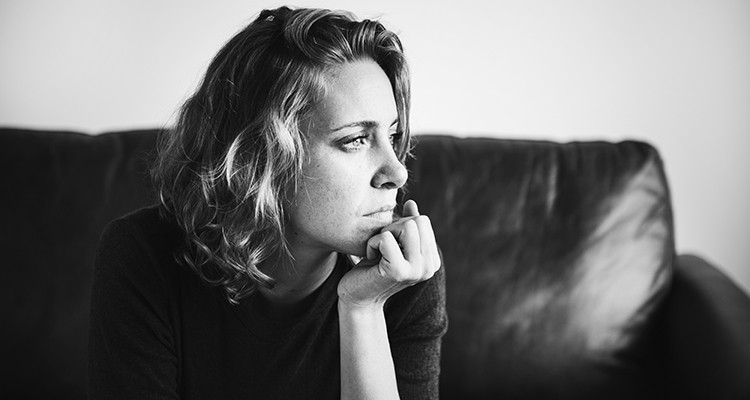
The truth is sleep pattern disturbances are wrought with health consequences, such as impaired cognitive functions, mood swings, changes in thought processes and behavior, extreme fatigue, memory problems, hypertension, rage-filled outbursts, social isolation, depression, anxiety (i.e., PTSD, panic attacks, bipolar disorder, OCD, etc.), high “bad” cholesterol levels, headaches/migraines, sexual dysfunction (i.e., premature ejaculation (PE), impotence or erectile dysfunction (ED), low libido or sexual desire, etc.), suicidal ideation, risky, dangerous, impulsive, or violent tendencies, addiction, etc.
In fact, studies suggest that “sleeplessness” due to sleep pattern disturbances, can trigger or worsen arthritis symptoms by activating certain inflammatory markers. Similarly, a 2014 study found that approximately 2/3 of people, who struggle with chronic pain, also experience “tiring sleep” or “non-refreshing” or “light sleep” regularly.
As a result, researchers have concluded that pain (a sleep pattern disturbance) can negatively affect a person’s sleep quality, increase his or her pain, and exacerbate symptoms. Moreover, a 2006 study found that people, who regularly suffer from sleep pattern disturbances, tend to experience fewer job prospects, poorer social skills, moodiness or crankiness, a pessimistic attitude, and limited social interactions, than those, who do not suffer from these “disturbances.”
Furthermore, some studies indicate that some OTC and prescription medications, especially those used to relieve pain (i.e., oxycodone, tramadol, hydrocodone-acetaminophen – Lortab, morphine, and codeine, corticosteroids, SSRIs antidepressants, alpha-blockers, beta-blockers, statins, and Excedrin, caffeine pills, focus and concentration supplements, etc.) can splinter or “disrupt” your sleep patterns and “disturb” your sleep cycles.
How Are Sleep Pattern Disturbances Treated?
Several approaches and methods are used to treat sleep pattern disturbances. One of the most common ways to treat these “disturbances” is with cognitive-behavioral therapy for insomnia (CBT-i). CBT-i involves changing the way you “see” or perceive something (sleep and sleep pattern disturbances) so you can adequately assess the value you place on these “faulty thoughts. Cognitive-behavioral therapists believe that your thoughts control your behavior.

Thus, to change a behavior (“sleeplessness” or insomnia), you will first need to change how you “see” or “view” the person, place, thing, event, or experience preventing you from sleeping. CBT typically lasts between 8 and 12 weeks. It is usually offered in in-person sessions and in virtual (online) sessions. Therapy sessions may involve various sleep tests to evaluate your sleep patterns, circadian rhythms, sleep hygiene and quality, and any sleep pattern disturbances that could be triggering or worsening your “sleeplessness” or insomnia.
Your therapist may also ask you to complete a sleep journal, so you can “see” the full picture – your thought processes and behaviors and your insomnia triggers, setbacks, progression, and successes – with the hope that you will experience significant improvements in your sleep patterns and quality.
Self-help techniques like melatonin supplements, blackout curtains, hypnosis, mindfulness meditation, yoga, relaxation techniques, CBD supplements, reading, a consistent bedtime routine, earlier meals, and an earlier bedtime, shutting down electronic devices an hour before bedtime, and/or investing in a sound machine are only some of the ways you can banish “sleeplessness” and insomnia from your life.
One sleep intervention that is quietly taking the world by storm is online insomnia treatment programs. Insomnia treatment programs, like Somnus Therapy, can make life feel a little less stressful – and restless. What is the highlight of Somnus Therapy? Cognitive-behavioral therapy – For insomnia (CBT-I) all at the tips of your fingers.
Real therapy from a real cognitive-behavioral therapist on your own terms, in your comfort zone. In other words, you get a therapy session whenever and wherever you want it. Somnus Therapy offers pre-recorded CBT sessions and guided meditations, a personalized sleep coach, and invaluable support – everything you need to get on the path to quality zzz!
Medications, such as OTC sleeping pills (Unisom, SleepWell, ZZZQuil, etc.), herbal supplements (melatonin, GABA, L-Theanine, vitamin B6, St. John’s Wort, CBD, etc.), and prescription sleep medications (Lunesta, Restoril, Sonata, Ambien, etc.), can help some insomniacs finally block out sleep pattern disturbances so they can get some much-needed zzz. However, the first course of action is the least “aversive” treatment options, such as online sleep programs, lifestyle changes, etc.
Note: If you struggle with one or more underlying health conditions, there are non-pharmaceutical treatments, such as biofeedback and acupuncture that will not only eliminate your “disturbances,” but also help you conqueror your sleep issues – for good!


